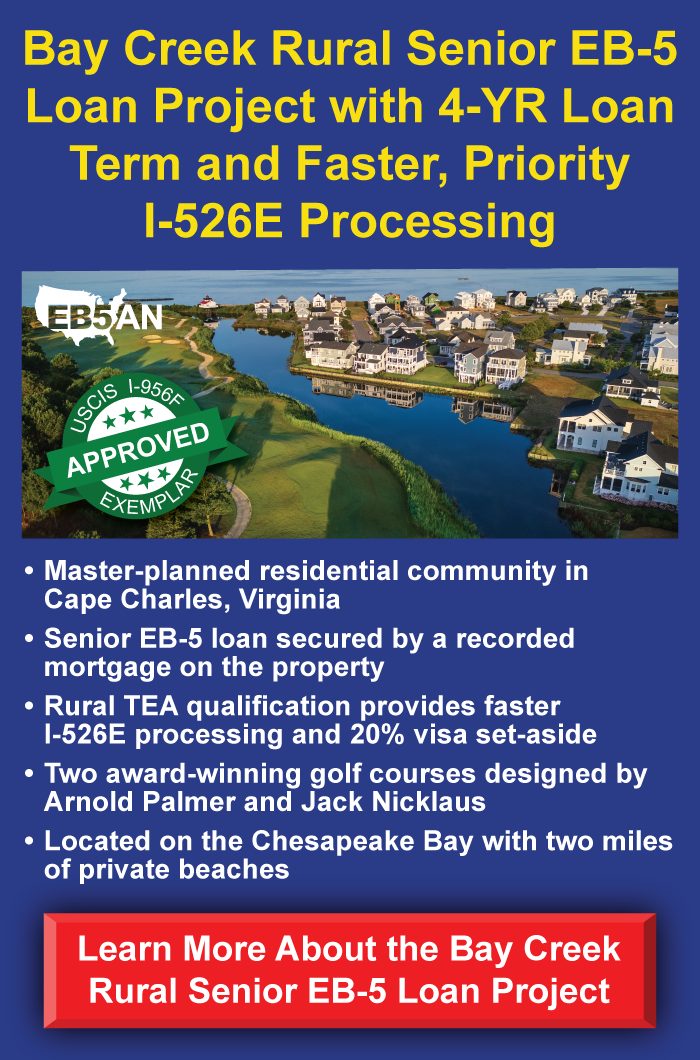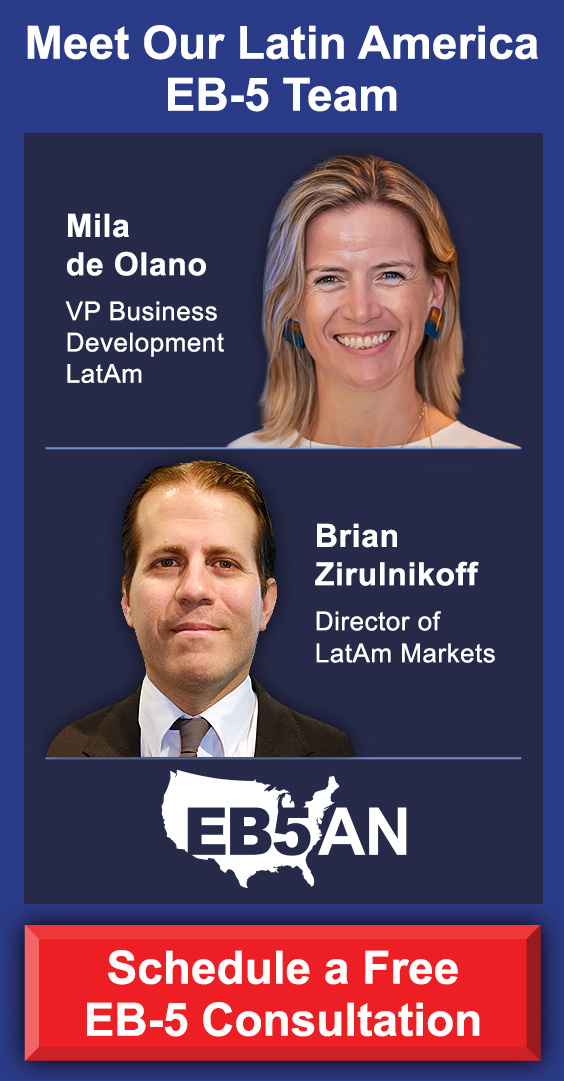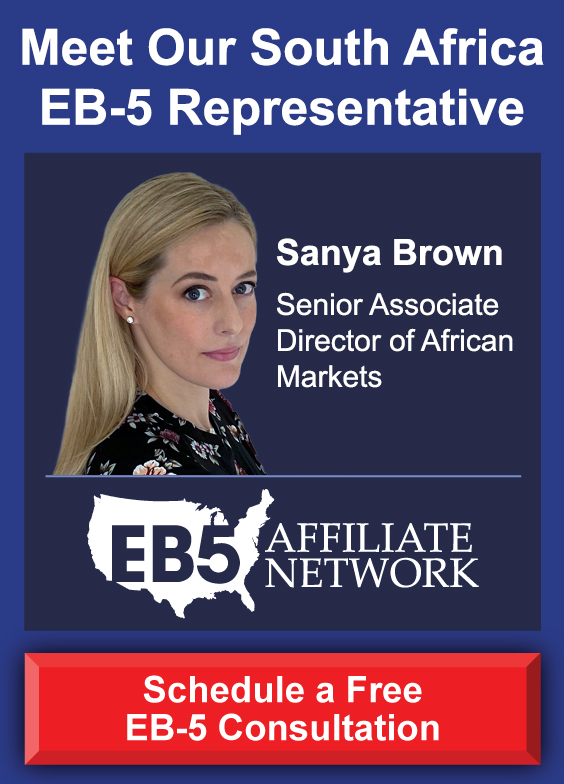The EB-5 Immigrant Investor Program offers a pathway for foreign nationals to secure U.S. permanent residency by investing in new commercial enterprises that create 10 full-time jobs in the U.S. While the program is a fantastic opportunity for those looking to invest in the U.S. and gain a Green Card, it’s crucial to ensure that the investment itself is sound.
One of the biggest risks to avoid in the EB-5 space is investing in developer-controlled EB-5 projects. These projects often come with a set of significant challenges and risks that can jeopardize an investor’s capital and chances of obtaining a Green Card.
In this article, we detail the top issues to consider before committing to such investments.
No Senior Financing or Unsecured Loans
No Collateral and Questionable Repayment
All Affiliated Entities Involved in the Entire Deal
Not Fully Baked: No Confirmed Brand, Manager, or Tenants
Waiver of Fiduciary Duties
Inconsistencies in Key Terms
Errors: Lack of Attention to Detail in Paperwork
EB5AN Can Offer You Reliable Projects
No Senior Financing or Unsecured Loans
One of the biggest red flags in developer-controlled EB-5 projects is the absence of senior financing or, if senior financing exists, its lack of personal guaranties.
Senior financing is the capital that comes from institutional lenders who hold the primary claim on the project in the event of default. This ensures that investors in the project are secondary creditors. In contrast, without senior financing, EB-5 investors become the primary source of capital, increasing their risk in case the project underperforms.
Even when senior financing is present, developers may not personally guarantee the loan. Without this guaranty, the developer does not have a financial stake in the repayment, potentially leaving EB-5 investors on the hook if the project encounters financial difficulties. This lack of financial backing can make a significant difference in the project’s overall stability and the likelihood of investors being repaid.
As an investor, it’s essential to carefully scrutinize the financing structure of any EB-5 project. A senior loan, secured by collateral and personally guaranteed by the developer, provides more security to investors. Without these protections, there’s a higher risk of losing your investment and your Green Card.
No Collateral and Questionable Repayment
EB-5 investments are typically structured as loans to the developer, and repayment depends on the project’s ability to generate sufficient cash flow or to refinance the debt.
Loan Has No Collateral
In some developer-controlled projects, the loan is completely unsecured, meaning there is no collateral backing it up. If the project fails or doesn’t perform as expected, investors have no recourse to recover their capital.
Repayment Is Only Out of Cash Flow or Tied to an Unlikely Refinancing Event
Worse yet, repayment may be tied to uncertain or speculative events, such as a refinancing event that is unlikely to happen. For instance, a developer may rely on their ability to refinance the project at a later stage, but there’s no guarantee that external market conditions or interest rates will make this feasible. If refinancing isn’t possible and the project doesn’t generate enough cash flow, there may be no way for investors to recover their funds.
When evaluating an EB-5 project, ensure that the loan is secured by valuable collateral that can be liquidated in the event of a default. Additionally, check for a clearly defined and achievable repayment schedule, not one reliant on speculative refinancing or unpredictable cash flows.
All Affiliated Entities Involved in the Entire Deal
In some cases, developer-controlled EB-5 projects involve a complex web of affiliated entities. This means that the developer, the EB-5 regional center, and potentially even the entities controlling the construction and management of the project are all related in some way. While this may not seem problematic at first, it introduces a conflict of interest and a lack of independent oversight.
These interrelated entities can make it difficult for investors to assess the true risk of the project, as the developer has the ability to shift funds between affiliated entities or make decisions that primarily benefit themselves. This lack of independent review and third-party accountability increases the risk that the project will not be managed effectively or that funds will be misallocated.
Investors should always look for projects where the entities involved have clearly defined, independent roles and are not overly interdependent. The presence of multiple, unrelated third parties overseeing different aspects of the deal can offer a more balanced and transparent investment structure.
Not Fully Baked: No Confirmed Brand, Manager, or Tenants
A common issue with developer-controlled EB-5 projects, particularly in the hospitality or commercial real estate sectors, is that the project may not be fully developed in terms of operational details.
For example, a hotel project may have no confirmed brand or management in place, meaning that there’s no established operator to ensure that the hotel will be successful. Similarly, retail or office buildings may not have pre-leased tenants, creating uncertainty around whether the project will generate the cash flow needed to repay investors.
Investors should be wary of projects where the key components, such as tenants or management, are not yet secured. These details can make the difference between a thriving project and one that struggles to generate revenue. When looking at an EB-5 project, ensure that there are firm commitments for tenants, brands, or operators and that the project is moving forward with a clear, feasible plan.
Waiver of Fiduciary Duties
One of the biggest red flags an EB-5 investor can encounter is a waiver of fiduciary duties.
The fiduciary duty is a legal obligation that requires the developer to act in the best interest of their investors. If a project’s documents contain language waiving this duty, it means that the developer is legally free to make decisions that may benefit them at the expense of their investors.
Waiving fiduciary duties should be considered an immediate red flag. It implies that the developer can prioritize their personal interests over the investment and may not be held accountable if things go wrong. Investors who encounter such terms should run—not walk—away from the deal. A legitimate and trustworthy developer should be willing to accept their fiduciary responsibilities to protect the interests of EB-5 investors.
Inconsistencies in Key Terms
In some EB-5 projects, there may be inconsistencies in the key terms outlined in different documents associated with the investment.
For example, one document may indicate that the maturity date of the loan will be determined by a specific set of circumstances, while another document lists a different, conflicting approach to determining that same date. These discrepancies can cause confusion and uncertainty about the investment’s terms, making it harder for investors to understand the true risks involved.
These inconsistencies can also indicate a lack of attention to detail and may signal that the developer is not fully committed to ensuring a smooth and reliable investment experience.
When reviewing EB-5 project documents, make sure that all terms are consistent across all materials and that no conflicting statements are present. If there are discrepancies, it’s a sign that you should seek clarification or, better yet, move on to a more reliable opportunity.
Errors: Lack of Attention to Detail in Paperwork
Lastly, investors should pay close attention to the quality of the paperwork associated with an EB-5 project.
If the developer has made frequent errors, failed to fix simple issues, or seems to have overlooked important details, this is a serious warning sign. A developer who cannot be bothered to ensure that their paperwork is accurate and professional may be similarly careless when managing investor funds or overseeing the project.
Investors should expect a high level of professionalism from those handling their capital, particularly when the stakes are as high as securing a Green Card and a significant financial return. If you encounter numerous errors in documents or a lack of attention to detail, it’s a strong indicator that the developer may not be a trustworthy partner for your investment.
EB5AN Can Offer You Reliable Projects
While the EB-5 program provides an opportunity for foreign investors to obtain a Green Card, it’s crucial to exercise caution when selecting a project. Developer-controlled EB-5 projects often present substantial risks, including a lack of senior financing, unsecured loans, conflicts of interest with affiliated entities, unclear operational details, and even legal documents that benefit the developer over the investor.
Before committing your capital, thoroughly evaluate these risks and avoid projects where key terms are inconsistent, fiduciary duties are waived, or errors are prevalent in the paperwork.
By choosing a more transparent, secure, and well-managed investment, you can increase your chances of a successful EB-5 journey, protecting your financial interests and achieving your goal of obtaining a Green Card.
EB5AN has helped more than 2,300 families from 70+ countries become lawful permanent residents of the United States. Our team has more than a decade of experience, and we offer our clients first-rate, low-risk EB-5 regional center projects with a 100% USCIS project approval rate.
If you would like to know more about your EB-5 investment options, book a free call with our expert team today.










